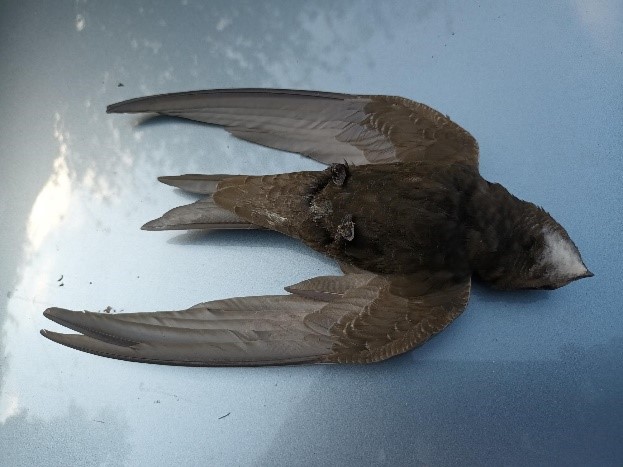They’ve made it again,
Which means the globe’s still working, (Swifts by Ted Hughes 1976)
Imagine summer evenings without swifts. At the current rate of decline (sixty percent of swifts lost between 1995 and 20201) we could soon be experiencing swift-less evenings first hand. Why? Loss of nesting sites, as old buildings are refurbished, and new estates of seemingly hole-free houses are eating up the countryside is one main reason. Why is it developers that bestow countrified names like ‘Meadowlands’ or ‘The Orchard Quarter’ on their new estates (it adds a few grand more to the selling price than ‘Motorway View’ I suppose) are too mean to add a swift nestbox brick or two (a few pounds each) to every house?
The second is loss of flying insects (also sixty percent lost in just twenty years2). The relentless increase in intensive agriculture continues to add more and more insecticides and herbicides to the environment to kill both insects and the plants they depend on. I’m not criticising farmers – we are all to blame for demanding endless cheap(!?) food, of which we then throw away an estimated forty percent.3
A recent visit to a large local garden centre also offered a clue to why our gardens are swiftly (how ironic is that) becoming no-go zones for wildlife. I was relieved to find they were selling real turf and not plastic grass, but in thirty minutes on a warm, sunny May day in the Garden of England, next door to a small woodland, and surrounded by rack-upon-rack of brightly-coloured flowering plants and shrubs, I saw just one insect – an orange-tip butterfly. Was the explanation to be found in the shelf-upon-shelf of chemical pest and weed killers that we are constantly told are essential to a beautiful garden? Big profits for big chemical companies; even bigger losses for our environment.
Strangely, my relationship with The Farleighs’ swifts, and their confirmation that the globe is still working, is now regulated by the annual phone call Sheila makes to me from East Farleigh’s church to say they’re back - inside it! This year’s call came on 10th May to say one was flying around the vestry – not the nave where she usually finds one. Our efforts to trap and release it were unfortunately thwarted when it disappeared in a gap behind the coving between the ceiling and wall. It had scrambled down a cavity out of sight, and certainly out of reach.
A few days later came the call I was dreading – Sheila had found the vestry swift dead on the floor. Having emerged from its bolt hole it had obviously continued its endless circling of the room and, as it was found to be thirty percent lighter than a normal bird, had probably succumbed to starvation.

But there was now a second bird circling the nave.
Several years of practice means we now net these birds in flight quite easily. They are examined – both these birds were females attempting to nest – measured and weighed, and then a ring is added to one of their tiny legs with a unique ID, to trace their origin should they be retrapped. Our live bird was close to the average weight so hadn’t been trapped for long. As swifts spend their first four years of life on the wing before attempting to breed, it’s likely our two birds were at least that old, so we can only guess how many hundreds of thousands of non-stop miles they had flown before entering the church roof via a gap in the tiles, and then a gap in the ceiling into the inside. Having been declared fit and healthy, our lucky intruder was taken outside and returned to the sky.
Farleigh swifts are lucky in that four nest boxes have been put high up on the external wall of the church (but not adopted yet) and they can still take advantage of holes in the ancient fabric for nesting. What they still face, though, is the seemingly relentless – but entirely preventable – decline of flying insects.
So, why not do your bit? Bin the chemical control and start to enjoy the wildlife in your garden while it’s still there. Ted Hughes could have finished his poem by pointing out that if no swifts means the globe has stopped working, it will mean no people too.
Ray Morris
1 Swift | BTO - British Trust for Ornithology
2 UK's flying insects have declined by 60% in 20 years | Natural History Museum (nhm.ac.uk)






Make A Comment
Comments (0)